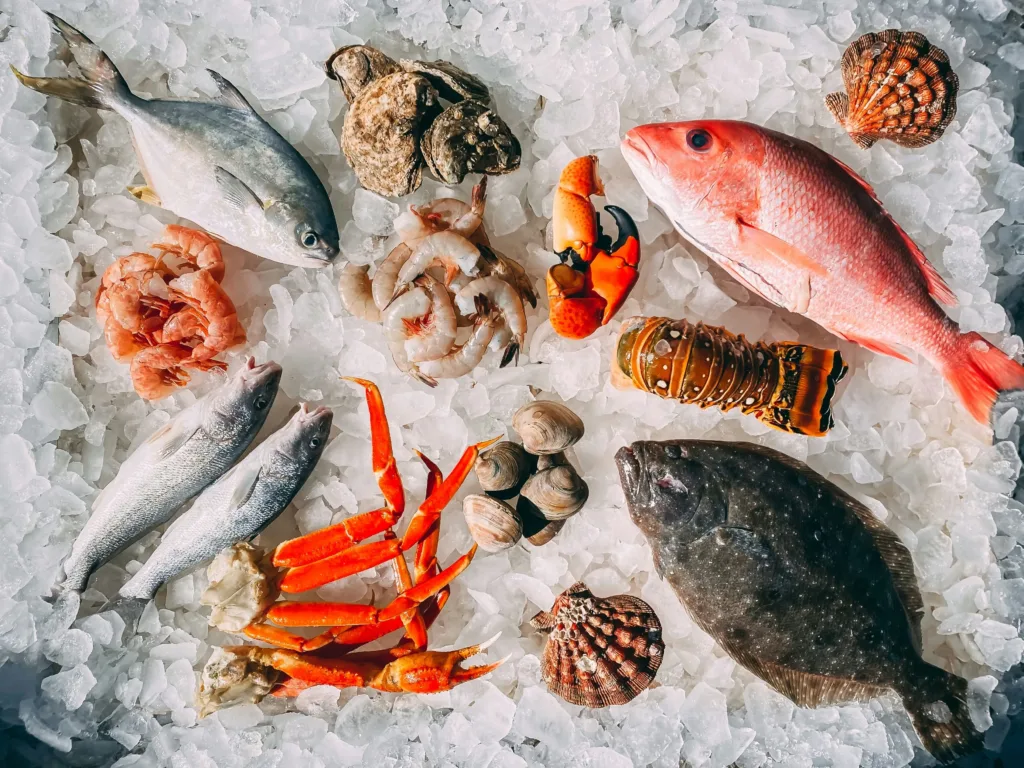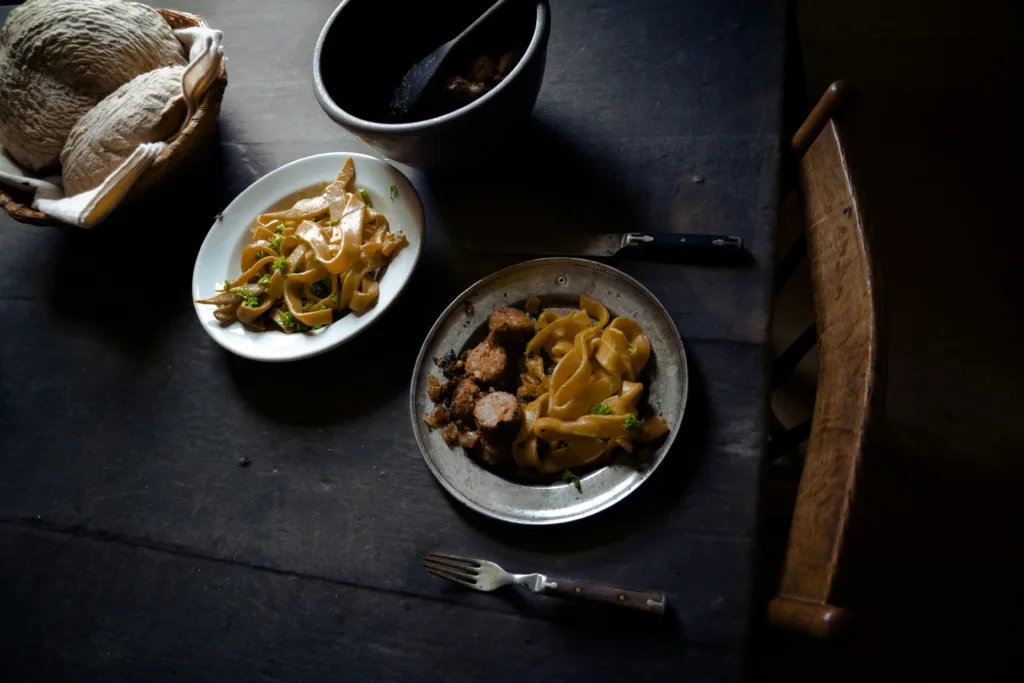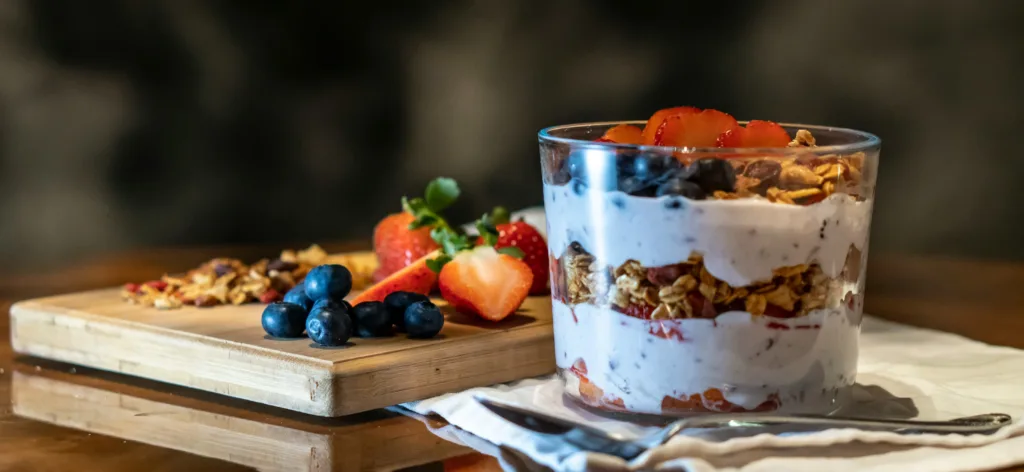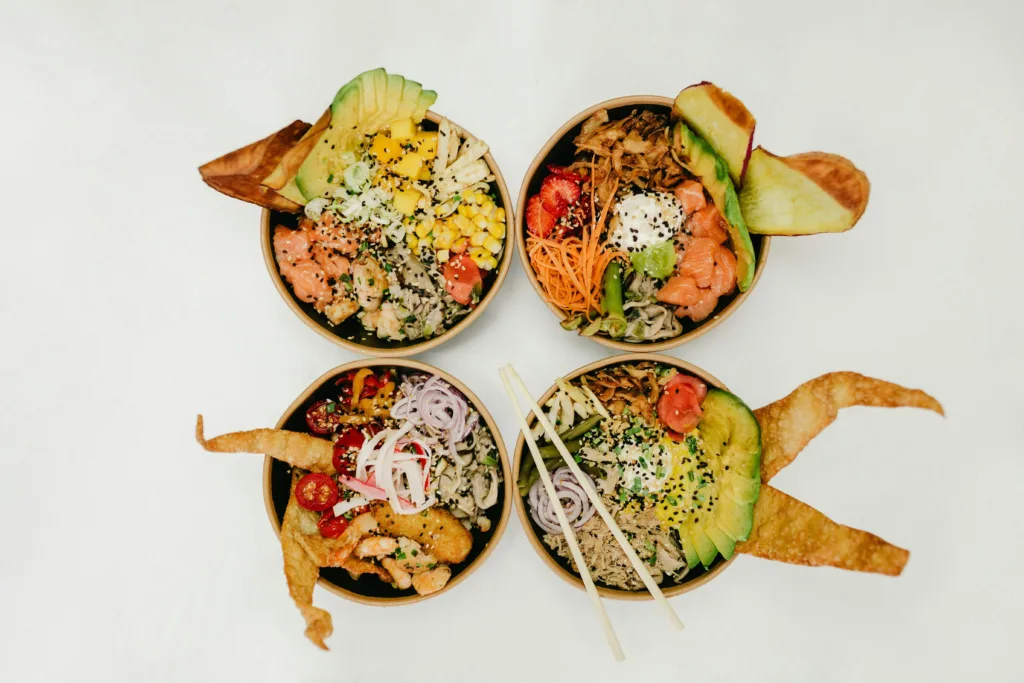Let’s be honest, changing your diet for medical reasons can feel like a lot. Especially when you’re told to cut out everyday things like dairy, seafood, and even eggs. But here’s the thing: a low iodine diet doesn’t have to be miserable, confusing, or bland. Whether you’re gearing up for radioactive iodine treatment or following your doctor’s advice for a scan, this two-week meal plan is here to make your life easier. No complicated ingredients. No stress. Just real food that tastes good and works with your treatment, not against it. We’ve put together two full weeks of low iodine meals, so you don’t have to figure it out alone.
And that’s exactly why we built ReciMe – to take the stress out of meal planning, especially when you’re following a specific diet like low iodine. We know how overwhelming it can feel to keep track of what you can and can’t eat, read every label, and still try to eat meals that actually taste good. With ReciMe, you can save all your go-to low iodine recipes in one spot, plan out your two-week menu with ease, and generate smart grocery lists that sort everything by aisle, so no more wandering back and forth at the store. Whether you’re prepping for treatment or just trying to stay organized, we’re here to help you feel a little more in control, one meal at a time.

Download for free from the App Store on iPhone and iPad

ReciMe Android App
What is a Low Iodine Diet (LID)?
In plain terms, a low iodine diet means limiting foods that are high in iodine for a short time. This is usually recommended before radioactive iodine treatment or scans for thyroid cancer. The idea is to reduce the iodine in your body so that your thyroid cells absorb more of the radioactive iodine during treatment.
Here’s what you’re avoiding temporarily:
- Iodized salt (and anything made with it)
- Seafood and seaweed products
- Dairy (milk, cheese, yogurt, butter, etc.)
- Egg yolks (egg whites are OK)
- Soy and soy-based products (including tofu and soy milk)
- Some beans like lima, pinto, kidney, and navy
- Commercial bakery items made with iodate dough conditioners
- Red Dye #3 (found in some candies and processed foods)
This isn’t a salt-free or fat-free diet. You can still enjoy flavorful, hearty meals. And yes, you can still use salt – just make sure it’s non-iodized.

What You Can Eat (Yes, There’s Plenty)
Here are your go-to foods during a low iodine diet. They’re the backbone of your meal plan:
- Fresh or frozen fruits and vegetables (raw or cooked)
- Fresh meat, poultry, or freshwater fish (not processed or canned)
- Egg whites
- Rice, pasta, oats, couscous, quinoa, barley
- Non-dairy milk (check for no carrageenan or added seaweed)
- Unsalted nuts and nut butters
- Homemade or verified low iodine bread
- Jam, honey, maple syrup, sugar
- Olive oil, vegetable oil
- Dark chocolate (70% cocoa or higher)
- Water, juice, lemonade, soda, tea, coffee (no milk)
Now, let’s take it one day at a time, keep it simple, and maybe even enjoy a few new go-to meals along the way.
Week 1: Low Iodine Meals Day by Day
This first week is all about getting into the rhythm. Keep it simple. Use ingredients you already like. And don’t overthink it, there’s no need to make everything from scratch if it’s already safe and label-checked.
If you batch-cook proteins or sides ahead of time (like grilled chicken, roasted veggies, or rice), you’ll save tons of time. Rotating similar ingredients is totally fine. Boring is better than stressful.
Day 1
Breakfast
Oatmeal made with almond milk, topped with sliced banana and maple syrup. A comforting, easy-to-make breakfast. Use rolled oats, cook in almond milk (check for carrageenan-free), and finish with fresh banana slices and a drizzle of pure maple syrup.
Lunch
Baked potato with non-dairy spread and baked beans. White or sweet potatoes work. Stick to plain canned baked beans (check for added ingredients) and spread with something like Vitalite or Pure.
Dinner
Stir-fried chicken with broccoli, carrots, and rice. Stir-fry lean chicken breast with olive oil, garlic, and your favorite veggies. Serve over plain rice. Use low-sodium soy-free sauce or just olive oil and lemon.
Snack
Apple slices with unsalted peanut butter. Natural peanut butter is best. Just check it’s unsalted and doesn’t contain added oils or sweeteners.
Day 2
Breakfast
Toast with jam and a fresh pear. Use homemade or store-bought bread without iodate conditioners. Jam should be fruit-based, without additives.
Lunch
Couscous salad with chickpeas, roasted peppers, and olive oil. Make extra roasted veggies for tomorrow’s lunch. Add lemon juice, cucumber, or herbs to keep it fresh.

Dinner
Pork chops with sweet potato mash and green beans. Grill or oven-bake pork chops. Steam or roast green beans and mash sweet potatoes with a splash of almond milk and olive oil.
Snack
Rice cakes with guacamole. Make guac with mashed avocado, lemon juice, and a pinch of salt. Rice cakes should be plain and unsalted.
Day 3
Breakfast
Fruit salad with a sprinkle of cinnamon. Use whatever’s in season: melon, grapes, apple, banana, berries. Add ground cinnamon for a cozy flavor boost.
Lunch
Chicken sandwich with homemade bread, non-dairy spread, and lettuce. You can use safe store-bought bread, or prep a batch of low iodine homemade bread on Day 1 and freeze slices.
Dinner
Spaghetti with meat sauce (no cheese). Use plain pasta, ground beef or turkey, and homemade tomato sauce. Add herbs like oregano or basil for flavor.
Snack
Plain popcorn with a pinch of salt. Air-pop or use a little olive oil on the stove. Don’t add butter or flavor powders.
Day 4
Breakfast
Porridge with chopped apples and a drizzle of honey. Cook oats with water or non-dairy milk, top with diced apples (cooked or raw), and finish with honey.
Lunch
Lentil-free vegetable soup and homemade bread. Stick to veggies like carrots, potatoes, and celery. Avoid creamy soups or anything with bouillon cubes.
Dinner
Beef stir-fry with zucchini, carrots, and rice. Use thin strips of beef, lots of veggies, and olive oil. Cook with garlic, ginger, or a splash of vinegar.
Snack
Square of dark chocolate (70% cocoa or more). Check the label to make sure it doesn’t contain dairy or soy lecithin.
Day 5
Breakfast
Toast with non-dairy spread and marmalade, Marmalade is usually safe, just check the label for additives.
Lunch
Roasted vegetable couscous bowl with olive oil dressing. Use leftovers from earlier in the week or roast a mix of courgette, peppers, and tomatoes.
Dinner
Chicken stew with potatoes and carrots. A cozy one-pot meal. Simmer everything in water or tomato base with herbs. Avoid stock cubes unless they’re verified iodine-free.
Snack
Stewed pears or apples. Lightly simmer fruit with cinnamon and a splash of water until soft.
Day 6
Breakfast
Hash browns with sautéed mushrooms and tomatoes. Make homemade hash browns with grated potato and olive oil. Pair with pan-fried mushrooms and cherry tomatoes.
Lunch
Salad with avocado, cucumber, and grilled chicken. Add olive oil and lemon dressing. Use leftover chicken from dinner earlier in the week to save time.
Dinner
Lamb chop with roasted potatoes and carrots. Season lamb with rosemary and garlic. Roast your veggies in olive oil and you’re good to go.
Snack
Homemade fruit jelly or sorbet. Make jelly with fruit juice and gelatin (no dairy). Store-bought fruit sorbet can also work, just double-check the label.
Day 7
Breakfast
Oatmeal with blueberries and maple syrup. A repeatable classic. Use frozen or fresh blueberries and avoid pre-flavored oatmeal.
Lunch
Toast with tinned tomatoes and a side of salad. Use plain tinned tomatoes, heat them gently with garlic and oregano, and pour over toast. Add a side salad with olive oil.
Dinner
Sweet and sour chicken with white rice. Use a homemade sauce with vinegar, a bit of sugar, garlic, and tomato puree. Avoid store-bought sauces with soy or additives.
Snack
Carrot sticks with homemade hummus (no tahini). Blend cooked chickpeas, olive oil, garlic, lemon juice, and a pinch of salt for a tahini-free hummus.

Week 2: Keep the Momentum Going
Week 1 is done. You’ve found your groove, maybe even discovered a few new favorites. Now let’s keep things fresh without overcomplicating anything. You’ll notice some familiar ingredients popping back up, totally intentional. It saves time, reduces waste, and helps you meal prep smarter.
Day 8
Breakfast
Sliced melon with toast and jam. Fresh melon is hydrating and light. Pair it with toast (homemade or verified iodine-free) and fruit jam for something quick but satisfying.
Lunch
Baked potato with homemade chili (no dairy). Use ground beef, chopped tomatoes, onion, garlic, and approved beans (no kidney, lima, or soy). Skip the cheese and sour cream.
Dinner
Grilled pork with steamed veggies and couscous. Season pork with paprika or dried herbs. Steam a mix of carrots, courgettes, and green beans. Serve with fluffy couscous tossed in olive oil.
Snack
Popcorn or dark chocolate. A repeat-worthy snack. Air-popped popcorn with a touch of salt or a square of 70%+ cocoa dark chocolate.
Day 9
Breakfast
Rice cereal with almond milk and chopped strawberries. Choose a plain puffed rice cereal (no additives), pour over almond milk, and top with sliced fresh strawberries.
Lunch
Chicken and rice salad with olive oil dressing. Use leftover chicken and mix it with cold rice, diced cucumber, tomato, and a splash of olive oil and lemon juice.
Dinner
Beef and vegetable curry with basmati rice (no cream). Make it with beef chunks, potatoes, carrots, and curry spices. Skip coconut milk unless you’re sure it’s carrageenan-free.
Snack
Apple slices with almond butter. Same rules as peanut butter: make sure it’s unsalted and has no extras.
Day 10
Breakfast
Toast with honey and black tea (no milk). A classic combo. Use plain table bread and check honey for added flavors. Enjoy with black tea or herbal tea, no dairy added.
Lunch
Grilled veggie wrap. Use grilled courgette, red pepper, and hummus in a safe wrap or homemade flatbread. No cheese, no sauces with mystery ingredients.
Dinner
Baked chicken thigh with carrots and roasted squash. Bake everything on the same tray with olive oil and garlic. This one is cozy and leftovers-friendly.
Snack
Frozen grapes or stewed fruit. Grapes are naturally sweet and refreshing. If you’re craving something warmer, simmer apples or pears with cinnamon.
Day 11
Breakfast
Plain matzo with jam and fruit salad. Matzo is usually iodine-safe, just double-check the label. Add jam and a simple mix of chopped fruit for color and fiber.
Lunch
Stir-fried tofu (if approved) with rice and veggies. If your care team gives the green light for tofu (some say no to soy), fry it up with broccoli, carrot, and garlic. Pair with rice.
Dinner
Homemade risotto with butternut squash and peas. Cook arborio rice slowly in water or veggie broth (check for iodine-safe ingredients). Add diced squash and peas toward the end.
Snack
Popcorn or a square of dark chocolate. Easy, satisfying, and fits right in without a fuss.
Day 12
Breakfast
Porridge made with water, topped with pear slices, Porridge again, but this time use fresh, ripe pear and maybe a little cinnamon for flavor.

Lunch
Couscous and grilled chicken bowl with avocado and tomato. A build-your-own bowl vibe. Toss with lemon juice, olive oil, and fresh herbs like parsley or coriander.
Dinner
Pork stew with swede and carrots. A hearty, one-pot dinner. Simmer pork shoulder or lean pork with root veg and simple spices like thyme or black pepper.
Snack
Mango sorbet or jelly. Go for fruit-based options only, no dairy or artificial colors. Some supermarket sorbets are fine, but double-check.
Day 13
Breakfast
Rice cakes with marmalade. Choose unsalted rice cakes and top with marmalade or jam. Keep it simple and travel-friendly.
Lunch
Tuna-free salad with sweetcorn and baked potato. Make a salad with lettuce, tomato, cucumber, and tinned sweetcorn. Pair it with a baked potato and non-dairy spread.
Dinner
Chili made with ground beef, approved beans, and rice. Stick to black beans or pinto beans that are low iodine-safe. Avoid canned chili or spice packets with additives.
Snack
Cucumber sticks with homemade salsa. Blend fresh tomato, garlic, and lemon for a quick salsa. Serve chilled with raw veg.
Day 14
Breakfast
Toast with honey, black coffee. A no-fuss breakfast for your final LID day. Toast, drizzle of honey, and a strong coffee without milk.
Lunch
Homemade veggie soup and bread. Make a light soup with courgette, tomato, potato, and herbs. Skip the bouillon and go for a fresh flavor boost with garlic and onion.
Dinner
Roast chicken with mashed potato (no butter) and green beans. Roast a whole chicken or pieces with olive oil and herbs. Mash potatoes with non-dairy milk and serve with steamed green beans.
Snack
Soya-based pudding or fresh berries. Only if approved, a dairy-free pudding can be a nice treat. Otherwise, fresh strawberries, blueberries, or melon do the job just fine.
Two weeks on a low iodine diet can feel like a big shift, but with the right plan, it’s totally doable. By mixing simple ingredients, prepping ahead, and keeping meals varied, you’re setting yourself up for success, without sacrificing flavor. Stick to the basics, trust the process, and remember: it’s temporary. You’ve got this.
Tips to Stay on Track (Without Losing Your Mind)
This diet isn’t forever, but we all know two weeks can feel like two months when you’re trying to follow strict rules. The trick? Don’t try to be perfect, just be consistent. Here’s how to stay sane while sticking to your low iodine game plan.
- Read every label (even the boring ones): Iodine doesn’t show up on nutrition labels, which is honestly kind of annoying. But it does hide in ingredients. Keep an eye out for iodized salt, carrageenan (from seaweed), algin, alginates, agar, and Red Dye #3. If you see those? Back on the shelf it goes.
- Cook at home whenever possible: You don’t have to become a gourmet chef overnight, but the more you control your meals, the less you have to worry about mystery ingredients. Batch cook when you can and keep simple meals on repeat. A big stir-fry or chili can stretch over a couple of days without getting old.
- Plan your shopping like a pro: Make a running list of your safe, go-to items – non-dairy milks, fresh produce, certain breads, meats, and seasonings. Knowing what’s safe takes a lot of stress out of the grocery store. Bonus tip: keep a few easy meals on standby for the days when you just don’t feel like cooking.
- Stick to fresh when in doubt: Fresh fruits, vegetables, and unprocessed meats are your best friends right now. Not only are they safe, but they also leave zero guesswork. Canned, frozen, and pre-packaged foods can be okay too, but check the ingredients every time, especially with soups, sauces, or anything that claims to be “creamy.”
- Keep it interesting: A little variety goes a long way. Try swapping chicken for turkey, using different herbs or spice blends (without iodized salt), or switching up how you cook your veggies. Roasted, stir-fried, stewed, play around and find what keeps your taste buds happy.
Final Word
Yes, a low iodine diet takes effort. But it’s temporary, and it has a clear purpose: to make your treatment as effective as possible.
With this plan, you don’t have to overthink it. You’ve got options. You’ve got variety. And most importantly, you’ve got food you can actually enjoy without second guessing every bite.
Keep it simple. Keep it satisfying. You’ve got this.
FAQs
1. How strict do I need to be with the low iodine diet?
Pretty strict, but don’t panic over one mistake. The goal is to lower your iodine intake significantly, not eliminate it completely. If you accidentally eat something off-plan, just move on and get back to it at your next meal.
2. Do I need to avoid salt entirely?
Nope, you can still use non-iodized salt or regular UK table salt (which usually isn’t iodized). Avoid any salt labeled “iodized,” as well as Himalayan pink salt or imported salts that may contain iodine.
3. What’s the deal with eggs?
You’ll want to avoid egg yolks, but egg whites are fine and a great source of protein while you’re on the diet.
4. Can I eat bread or pasta?
Yes, but with caution. Many commercial breads use iodate dough conditioners, so check the ingredient list. Look for homemade or verified safe brands. Plain pasta and rice are generally fine as long as there are no added ingredients.
5. Is dairy completely off-limits?
Mostly, yes. Dairy products like milk, cheese, butter, and yogurt are high in iodine. Some plans allow a very small amount (like 1 oz of milk per day), but it’s best to stick with non-dairy alternatives like almond or oat milk, just check the labels for hidden ingredients like carrageenan.
6. Can I eat out at restaurants?
It’s risky. Restaurant food often contains unknown ingredients, including iodized salt, dairy, or seafood. If you can’t be sure what’s in your meal, it’s safer to eat at home.
